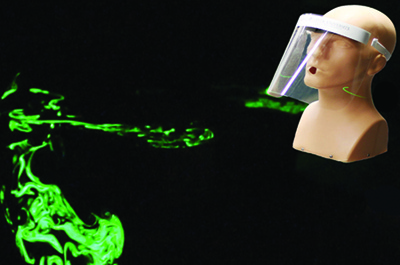
LONDON: Treating critically ill COVID-19 patients with corticosteroid drugs reduces the risk of death by 20 percent, an analysis of seven international trials found yesterday, prompting the World Health Organization to update its advice on treatment. The analysis - which pooled data from separate trials of low dose hydrocortisone, dexamethasone and methylprednisolone - found that steroids improve survival rates of COVID-19 patients sick enough to be in intensive care in hospital.
"This is equivalent to around 68 percent of (the sickest COVID-19) patients surviving after treatment with corticosteroids, compared to around 60 percent surviving in the absence of corticosteroids," the researchers said in a statement. "Steroids are a cheap and readily available medication, and our analysis has confirmed that they are effective in reducing deaths amongst the people most severely affected by COVID-19," Jonathan Sterne, a professor of medical statistics and epidemiology at Britain's Bristol University who worked on the analysis, told the briefing.
He said the trials - conducted by researchers in Britain, Brazil, Canada, China, France, Spain, and the United States - gave a consistent message throughout, showing the drugs were beneficial in the sickest patients regardless of age or sex or how long patients had been ill. The findings, published in the Journal of the American Medical Association, reinforce results that were hailed as a major breakthrough and announced in June, when dexamethasone became the first drug shown to be able to reduce death rates among severely sick COVID-19 patients.
Dexamethasone has been in widespread use in intensive care wards treating COVID-19 patients in some countries since then. Martin Landray, a professor of medicine and epidemiology at the University of Oxford who worked on the dexamethasone trial that was a key part of the pooled analysis published yesterday, said the results mean doctors in hospitals across the world can safely switch to using the drugs to save lives. "These results are clear, and instantly usable in clinical practice," he told reporters. "Among critically ill patients with COVID-19, low-dose corticosteroids…significantly reduce the risk of death."
Researchers said the benefit was shown regardless of whether patients were on ventilation at the time they started treatment. They said the WHO would update its guidelines immediately to reflect the fresh results. Until the June findings on dexamethasone, no effective treatment had been shown to reduce death rates in patients with COVID-19, the respiratory disease caused by the new coronavirus.
More than 25 million people have been infected with COVID-19 and 856,876? have died, according to a Reuters tally. Gilead Sciences Inc's remdesivir was authorized by United States regulators in May for use in patients with severe COVID-19 after trial data showed the antiviral drug helped shorten hospital recovery time.
Anthony Gordon, an Imperial College London professor who also worked on the analysis, said its results were good news for patients who become critically ill with COVID-19, but would not be enough to end outbreaks or ease infection control measures. "Impressive as these results are, this is not a cure. We now have something that will help, but it is not a cure, so it's vital that we keep up all the prevention strategies."
meanwhile, people wearing plastic face shields or masks fitted with a valve can spray invisible droplets over a very wide area when they sneeze or cough, making the devices ineffective at preventing the spread of coronavirus when used on their own, a simulation model shows. In a report published Tuesday in the US journal Physics of Fluids, researchers at Florida Atlantic University used vertical and horizontal laser sheets to track tiny droplets of distilled water and glycerin as they spread from a hollow mannequin head fitted with a plastic face shield or a mask with a breathing valve on it.
The face shield initially blocks the passage of the droplets as they move forwards, but "the expelled droplets can move around the visor with relative ease and spread out over a large area," the researchers said. As for a mask with a valve fitted to make breathing easier, "a large number of droplets pass through the exhale valve unfiltered, which make it ineffective in stopping the spread the COVID-19 virus if the person wearing the mask is infected". The researchers concluded that despite the comfort that both types of protection offer, high-quality cloth or medical masks of plain design are preferential in helping prevent the spread of the virus. - Agencies










